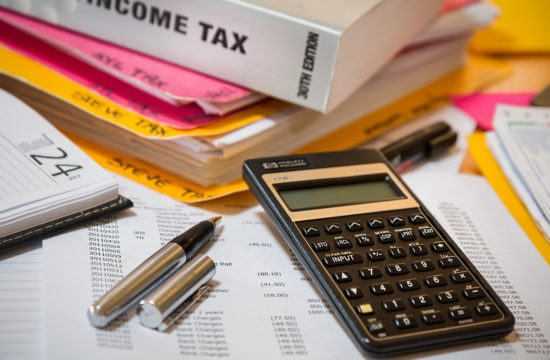New ITR Forms notified for the Financial Year (FY) 2017-18
The CBDT has notified the ITR forms for the Assessment Year (AY) 2018-19 well in advance so that the assessee must file their return well before the due date. The forms have been notified on 5 April 2018. Although the return filing will actually begin in June mid or July beginning as the employee waits for Form 16 from employer to file their return. All the ITRs are available for e-filing.

New ITR Form FY 2017-2018
Although, it is said that choosing and filing ITR can be done by anyone but it is no layman’s job. Service of professional is now a must, as even a single mistake is a sure invitation to notice from the department, as the returns are now being processed at CPC, Bangalore, using software which points out even a minor error or deviation.
Here, in this article highlighting the ITRs available for filing and some noteworthy changes in forms for FY 2017-18 (AY 2018-19)
1. ITR 1
Applicable to individuals having income from salaries, one house property, other income and having total income up to Rs 50 lakhs.
Applicable changes
– Earlier ITR-1 was applicable for Residents, Residents but Not ordinarily resident (RNOR) and also Non-residents. This year it has been made applicable only for resident individuals.
– Break-up of salary now a compulsory requirement which earlier was a single figure and reflected only in Form 16.
– Break up of Income under House Property is now mandatory, which was earlier mandatory only for ITR -2 and other forms.
– Additional field for furnishing details of TDS as per Form 26QC for TDS made on rent under TDS schedule. Also, quoting of PAN of Tenant for such rent cases is also there.
2. ITR 2
Since ITR-1 is not applicable to RNORs and the non-residents, they have to file ITR-2 for the sources of Income as applicable in ITR 1. ITR-2 has now been more clarified, as applicable for individuals and HUF having income other than income under the head “Profits and Gains from Business or Profession”
Applicable changes
– The “Profits and Gains from Business or Profession” field under Part B – TI has now been removed.
– In continuation, Schedule-IF (Income from Firm) and Schedule-BP have also been removed. Consequently, anyone having income from a partnership firm, will have to file ITR-3 instead of ITR -2.
– In addition, under Schedule AL, the field relating to “Interest held in the assets of a firm or association of persons (AOP) as a partner or member thereof” has been removed.
– TDS as per Form 26QC for TDS made on rent is to be complied with in same fashion as in ITR 1, hence ITR 2 also has the same provision of ITR 1. Provision for quoting of PAN of Tenant for such rent cases is also required.
3. ITR 3 This ITR form has been prescribed for individuals and HUF having “Income from Profits and Gains from Business or Profession”
Applicable changes
– Section 115H has been introduced which relates to benefit being availed under certain cases even after the taxpayer becomes a resident under General Information tab.
– Fields under Schedule PL will now include GST related details as a new addition. The upper ceiling in depreciation has been restricted to a maximum of 40% in all depreciation related schedules.
4. ITR 4
Applicable changes
– To cross verify the GST return with ITR, there is an additional requirement to quote GSTR No. and turnover/gross receipts as per GST return filed.
– Further, fields have been added under Financial particulars where now an assessee has to declare the following additional information.
– Partners/ Members Capital – Secured Loan – Unsecured Loan – Advances – Fixed Assets
5. Common points for all forms
a) Filing returns is now only electronically for all ITRs. Although there is an exception for following who can still file paper return for the forms ITR 1 to ITR 4.
– An Individual of the age of 80 years or more at any time during the previous year; or
– An individual or HUF whose income does not exceed five lakh rupees and who has not claimed any refund in the Return of Income.
b) From 1 April 2017, if you do not file your return within the due date, there would be a late fee payable under Section 234F up to Rs 10,000. The same has been incorporated in the returns itself for the late fees payable under Section 234F.
c) Cash deposit details as provided in ITR Form for AY 2017-18 has been removed from AY 2018-19.






